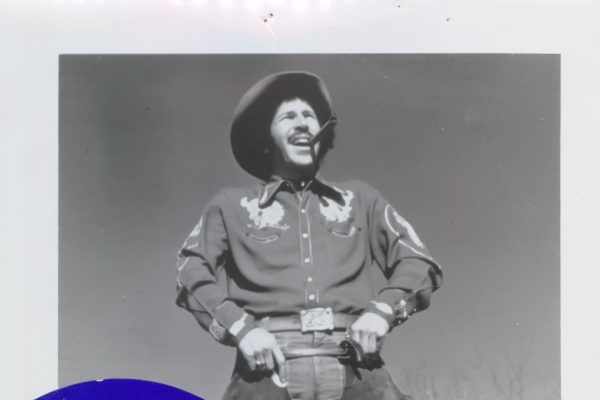Original Publication: Newsweek October 16, 1975
By MERRILL SHEILS with MARTIN KASINDORF in San Francisco and MAUREEN ORTH in New York
I don’t think very much is going to happen to her, because she was a kidnap victim, you will remember. -Randolph Hearst
As state and Federal prosecutors began to assemble the case against Patty Hearst and her own lawyers pondered her defense, a number of key questions emerged that will determine whether she will go to prison and, if so, for how long. Was Patty merely the victim of a kidnapping, brainwashed into cooperating with her captors as her father suggested – or was she in fact a voluntary convert to the SLA cause and a willing accomplice of its terrorism? Will her defense strategists succeed in winning enough sympathy for her as a kidnap victim to plea-bargain away some of the more serious charges against her? Or, given the powerful standing of the Hearst family, does Patty stand a chance of avoiding imprisonment altogether?
The charges against Patty are straightforward if numerous. Theoretically, they could lead to three separate trials in Federal and California State courts, although no one expects that to happen.
PREPPING FOR THE DEFENSE
Federal grand juries have indicted her for the robbery of a San Francsico bank on April 15, 1974, and for illegal possession of automatic weapons in the bank job and the holdup of an Inglewood, Calif., sporting-goods store in May 1974. California has lodged nearly a score of charges against her, all stemming from the episode in Inglewood when Patty and the Harrises allegedly tried to rob Mel’s Sporting Goods. Patty is charged with spraying the store carbine fire; all three are accused of commandeering several vehicles, kidnapping two of the drivers and robbing one of them. Counting all Federal and state charges, Patty faces 22 felony raps.
Randolph Hearst has been prepping to defend his daughter ever since the San Francisco bank robbery first raised the possibility of criminal charges. In lining up lawyers to take on her eventual defense, he stressed that the ultimate choice of counsel “would be up to Patty” when she returned. Two of his selections appear to have pleased her – John Knudsen, a young Hearst Corp. lawyer and Terrence (Kayo) Hallinan, 38, who represented her at her arraignment and bail hearings in San Francisco last week.
Hallinan and his father, Vincent, 79, are to the right. An old-line radical lawyer famous for his flamboyant defenses of labor figures, Vincent has been involved in the Hearst case since 1974, when Hearst asked him to help oversee $4 million he had set aside to buy his daughter’s release from the SLA. Early this year, on the chance that the Hallinans radical reputation might appeal to Patty, Hearst asked them to help with her defense. Hearst has backstopped the Hallinans with legal talent that he himself feels more comfortable with. Two Hearst Corp. attorneys and James Martin MacInnis, one of San Francisco’s best known criminal attorneys and a close family friend, have also joined the team.
The defense strategists are concentrating on the procedural technicalities. For one thing, they want to sever her case from the Harrises. “They are and have been totally separate,” said Hallinan. “They were found in different houses. The Harrises had the explosives, she didn’t.” If they succeed they can claim that Patty was the Harrises’ victim, not their accomplice. For another, although Patty wishes to plead not guilty on all counts, they may consider some plea bargaining; they might try to persuade Federal authorities to drop the bank-robbery charge in return for a guilty plea on the lesser crime of possessing automatic weapons. That tack would stand some chance of success. Even though Patty’s presence – with machine gun – was recorded on film, questions remain about her willing participation. Some film analysts even thought they discerned bindings holding the gun to her arm.
If they go to court, defense lawyers will almost certainly try to raise reasonable doubts in the jurors’ minds as to just exactly when – if ever – Patty crossed the line from frightened kidnap victim to willing criminal. They may plead “diminished capacity.” “There’s no doubt about it,” said her lawyer. “She was not in her right frame of mind.” But some lawyers point out that diminished capacity is an extremely difficult concept to convey to a jury; Sirhan Sirhan used it in his defense in the Robert Kennedy murder trial, and still received a death sentence.
COPPING A PLEA?
There is little chance that the Hearst name in itself, formidable as it is in San Francisco, will get Patty off the hook entirely. Federal Judge Oliver J. Carter, reputed to be one of the most lenient in San Francisco, seemed visibly unmoved last week by the battery of Hearst lawyers ranged in his courtroom. Not only did he reject their request for a reduction of Patty’s bail, he revoked her bail altogether. Both Federal and state prosecutors, too, claim that they have evidence enough to send Patty to jail.
State and Federal prosecutors will spend much of this week deciding whose cases should take precedence. The state may get first crack at Patty because its charges are more serious. Should Patty be convicted of all the state charges now lodged against her, she could be sentenced to life imprisonment. But that is unlikely to happen. More probably, Patty’s lawyers might plea bargain, exchanging a guilty plea to lesser charges for the dropping of some of the more serious counts. If, for example, the kidnapping charges are dropped in exchange for a guilty plea to the auto-theft charges, Patty might be sentenced to no more than five or six years in prison and be eligible for parole within two years. Whether the Feds would press their cases in such a situation remains to be seen.


